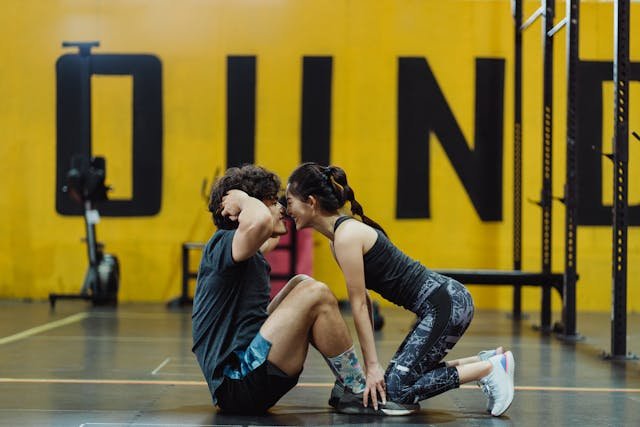
Research findings reveal significant patterns in human attraction and dating preferences, highlighting the important role of physical fitness. Unless you’re planning to be a sugar daddy or mommy, attractiveness will undoubtedly influence your dating experiences, as this is a fundamental aspect of human nature.
The Impact of Physical Fitness on Attraction and Dating Preferences
Studies show that men often exhibit a preference for attractive faces during initial attention tasks, indicating a bias toward visually appealing partners. This tendency is less evident among women, suggesting potential differences in the triggers of initial attraction between genders. Further support for the influence of physical attributes comes from research indicating that individuals who engage in regular exercise tend to be perceived more positively in terms of physical attractiveness, vitality, sociability, and overall impression compared to those who do not exercise.
The connection between body image and exercise preferences adds another layer to our understanding of motivation for physical activity. Those with lower body image scores are more likely to participate in aerobic exercises, which are often associated with fat reduction and weight control. In contrast, individuals with higher body image scores usually prefer anaerobic exercises linked to muscle building and strength enhancement. This distinction illustrates how self-perception influences exercise habits and aligns with goals related to attractiveness and body satisfaction.
Gender differences can also be observed regarding body satisfaction and its effects on well-being and exercise behavior. Women generally report higher levels of body dissatisfaction and place greater importance on appearance in relation to their well-being. However, the actual levels of physical activity do not significantly differ between men and women. For younger men, there is a positive correlation between body satisfaction and engagement in physical activity, which strengthens with a more intense focus on physical appearance. This correlation does not appear to exist for women or older men, indicating that different demographics experience unique influencing factors.
In women, muscular strength is associated with self-perceptions of power and correlates with a higher number of sexual partners, reflecting a societal shift towards valuing fitness and strength as attractive traits. Additionally, preferences for exercise types and intensities vary by gender. Research shows that college-aged individuals tend to favor self-directed exercise programs that combine moderate-intensity cardiovascular and strength training; however, college men show a stronger preference for intense strength training than college women, emphasizing gender-specific interests in fitness.
The Relationship Between Self-Esteem, Body Esteem, and Societal Perceptions
A clear link exists between self-esteem and body esteem. An increase in overall self-esteem is often accompanied by a rise in body esteem. Dissatisfaction with body weight can lead to lower self-esteem, highlighting the importance of physical self-perception on psychological well-being. Individuals who feel that others perceive them as attractive tend to experience lower social physique anxiety and higher self-esteem. This indicates that external perceptions can significantly impact internal states, with societal feedback affecting personal comfort and confidence levels.
These findings underscore the intricate web of factors that influence attraction and dating life. Physical fitness not only enhances visual appeal but also intertwines with psychological factors such as self-esteem, body satisfaction, and societal perceptions. Thus, pursuing physical fitness emerges as a means to improve both physical attractiveness and psychological well-being, making it an important consideration for individuals navigating the dating landscape.







